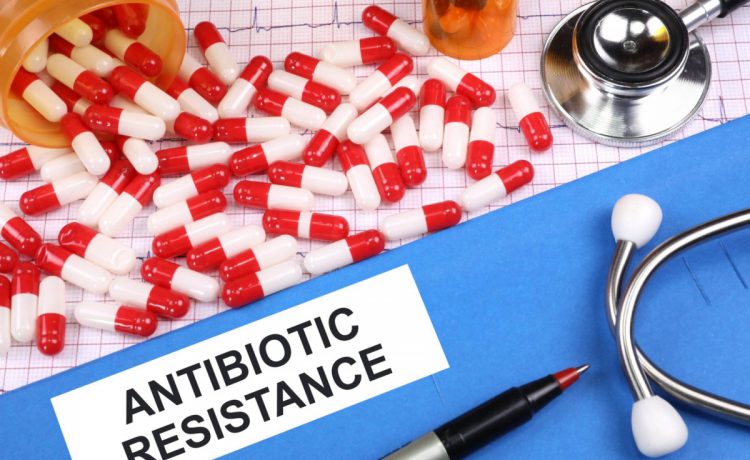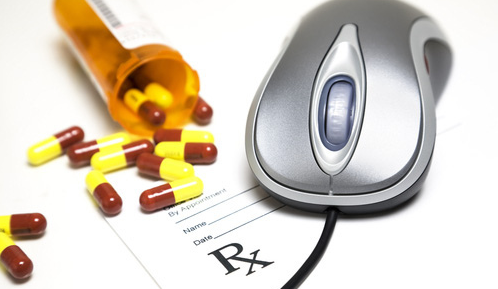Antibiotic resistance is a problem most healthcare providers are aware of, but many patients are not. While I learned about MRSA (Methicillin-resistant Staphylococcus Aureus) in medical school over 40 years ago, as a pediatrician antibiotic resistance was most evident when my patients returned with persistent ear infections. In retrospect, it was more complicated than I knew at the time. While some of the resistant ear infections appeared to respond to a different antibiotic — many of which were likely caused by bacteria resistant to the initial antibiotic chosen — others did not. It is now known that a lot of those ear infections did not respond because they were viral and would have resolved without antibiotics. The same is true of many pneumonias, sore throats, and sinus infections — especially in children. What was standard care at the time inadvertently contributed to the problem.
Inappropriate use of antibiotics such as treating known viral infections including head colds, flus, and COVID-19, treating infections for too long, and overuse of broad-spectrum antibiotics have been major contributors to the problem. The other major contributor is the unnecessary use of antibiotics in farm animals. Approximately 80% of the antibiotics used in the United States are given to livestock to prevent, control, and treat infection, enhance feed, and promote growth. In many cases this is done to compensate for the poor conditions the animals live in.
Even when used appropriately, antibiotic resistance develops over time. Staph infections can be very dangerous if not treated and withholding antibiotics is not an option. The same is true for most known bacterial infections, even common ones like a urinary tract infections, strep throat, and bacterial pneumonia. In fact, not treating bacterial infections for long enough or with the incorrect antibiotic results in the bacteria multiplying and having the time to mutate to a form that is resistant to the antibiotic used.
Some people are more susceptible to developing antibiotic resistance and will be at higher risk as the situation worsens. This includes older people and those with weakened immune systems from AIDS, treatment for an autoimmune disease (like lupus) with immunosuppressive therapy, cancer treatment, or the recipient of an organ transplant or stem cell (bone marrow) transplant.
Although complicated genetically, the basic process is that some bacteria will naturally have or become resistant to one or more antibiotics. When the number of resistant bacteria is small, the body’s immune system can deal with them and resolve the infection. When there are too many of these resistant bacteria, some will survive and pass along genetic coding to other bacteria that allows them to be resistant to the same antibiotics. This is usually between the same type of bacteria, but can also happen between different strains and species of bacteria.
The more antibiotics are used the more likely resistance develops, both in the types of bacteria and the number of antibiotics. In addition to Staphylococcus Aureus, other bacteria that are commonly resistant to multiple antibiotics (aka superbugs) include Clostridioides difficile, Enterobacteriaceae, Enterococcus, Acinetobacter, Escherichia coli, gonorrhea, and tuberculosis. The result is additive; thus the problem continues to grow at an increasing rate.
Part of the reason for this growth is that antibiotic-resistant bacteria can be spread in myriad ways including from other people, animals, insects, food, water, soil, air, and surfaces and equipment in healthcare facilities. In a mobile society and global economy, chances for exposures can come from anywhere in the world.
At this point the rate of antibiotic resistance — about 3 million infections last year in the United States alone — is increasing much faster than the ability to create and manufacture new antibiotics and other means to kill these bacteria or prevent them from multiplying and spreading. This is not surprising since the last new class of highly effective antibiotics was introduced 35 years ago. The major reasons for this are the effort needed to prevent the spread of infectious agents, the difficulty of developing new antibiotics, and the lack of appropriate motivation and funding to research, manufacture, and sell antimicrobials to treat these superbugs.
The current situation is a global problem and has had two major effects: a higher rate of serious infections and death due to infection, and a significant increase in the overall cost of medical care.
Dangers of Antibiotic Resistance
The major consequence of antibiotic resistance is that patients with resistant bacterial infections such as pneumonia, urinary tract infections, and gangrenous wounds will continue to get sicker. Many will need hospitalization and some will die from untreatable blood infections, fatal pneumonia, terminal cases of sepsis, or other untreatable infections before an effective antibiotic is found.
A study published February 2022 determined that antibiotic resistance is one of the leading causes of death in the world — 1.2 million deaths worldwide in 2019. These consequences occur because the initial presentation of an infection is usually the same whether or not the bacteria responsible is resistant and the healthcare provider will (and should) usually start with the recommended antibiotic. It is not until the infection fails to improve or gets worse that a resistant infection can be suspected.
If the rate of resistance is known to be high in that area, they would start with the antibiotic known to work on that bacteria/infection or a more broad-spectrum antibiotic — one that is capable of treating multiple bacteria/infections. Starting a broad-spectrum antibiotic too soon will contribute to the problem of antibiotic resistance, while the need to use multiple antibiotics increases the risk of side-effects.
Antibiotic resistance may compromise the success of many procedures — including joint replacements and organ transplants, and the successful treatment of cancer and chronic diseases like kidney failure, diabetes, asthma, and rheumatoid arthritis — that depend on effective prevention and treatment of infections. A similar effect on health and death rate also affects livestock and is also increasing over time.
Cost of Antibiotic Resistance
For individual patients antibiotic resistance increases the cost of medical care in the form of longer hospital stays, more provider visits, higher costs for multiple and more expensive drugs, and lost wages. A 2019 article determined that the total annual cost of antimicrobial resistance in the United States was $20 billion for direct healthcare costs and about $35 billion in loss of productivity. By 2050, the global cost of antibiotic resistance could be $100-210 trillion.
Overcoming Antibiotic Resistance
Overcoming the global problem of antibiotic resistance will require the combined efforts of healthcare providers, patients, health departments, medical researchers, pharmaceutical companies, regulatory boards, and governments.
There are many steps that need to be taken by healthcare providers to address the issue, such as:
- Stopping the inappropriate use of antibiotics for viral infections and taking the time to discuss and emphasize appropriate treatment measures;
- Continue evidence-based research to reduce the use of broad spectrum antibiotics when they are not needed by identifying the best antibiotic to use, prevent long-term antibiotic treatment by determining how long specific infections need to be treated, and identify situations where antibiotics are not useful such as many situations where preventative antibiotics are given before dental visits;
- Increasing measures to reduce bacterial contamination and spread among patients and staff — which have been shown to reduce death rates by 18%-30%; and
- Medical societies creating guidelines for their members to follow that encourage the correct use of antibiotics.
Individuals can lower their risk of developing antibiotic resistance by:
- Only taking antibiotics prescribed for them, not someone else’s;
- Following their healthcare provider’s advice to treat their viral symptoms without antibiotics and not pressuring their provider for an unnecessary antibiotic;
- Taking all of the antibiotics as prescribed, even if feeling better;
- Not putting unused antibiotics into the environment by flushing them down the drain or toilet;
- Getting vaccinated against bacterial infections such as pneumonia, diphtheria, tetanus, and pertussis; and
- Washing hands regularly. This and other good hygiene practices lowers the risk of getting a bacterial infection.
People with pets can follow similar measures about vaccinations and hygiene and when treating them with antibiotics. People working with farm animals can contribute by improving living conditions for livestock to reduce the need for antibiotics due to environmental exposure and the risk of spreading resistant bacteria. They also need to follow their veterinarian’s instructions on the dose and duration of antibiotic treatments and stop the use of antibiotics when they are not needed for a specific infection.
National, multinational, or global committees such as the CDC’s Antibiotic Resistance Solutions Initiative, the WHO’s Global Antimicrobial Resistance and Use Surveillance System, and the Global Antibiotic Research and Development Partnership must be created specifically to look at the issue. They should devise solutions to the problem of antibiotic resistance such as the U.S. National Action Plan for Combating Antibiotic-Resistant Bacteria, Global Action Plan on Antimicrobial Resistance, and Tripartite’s Commitment Food and Agriculture Organization/World Organization for Animal Health/World Health Organization guidelines. They should also be empowered to find ways to implement those solutions, including stopping the sale of over-the-counter antibiotics and encouraging pharmaceutical companies to develop new effective antibiotics.
Regulation is something that few people want, but if well planned the intended regulation can be effective.
- Providers are already monitored by hospitals and healthcare insurance companies for certain types of care provided and patient outcomes, so compliance with good antibiotic practices could be an additional step.
- Healthcare insurance companies may contribute by offering financial incentives to providers for appropriate use of antibiotics.
- Legislation such as the Pioneering Antimicrobial Subscriptions to End Upsurging Resistance (PASTEUR) Act may also contribute to overcoming the problem.
The final piece of the puzzle is funding.
- Pharmaceutical companies are typically driven by profit with no regulation on the types of medications they develop and produce. Antibiotic development and sales is not profitable for a number of reasons: the research is time-consuming and expensive, antibiotic treatments are typically short-term, and newer antibiotics will be used less often since superbugs are still a small percentage of all bacterial infections.
- Governments, committees, and other concerned organizations may be able to provide financial assistance to pharmaceutical companies to allow them to develop and sell effective antibiotics.
- Some drug development is done at universities and research hospitals, which would benefit from additional funding.
Unfortunately, bacteria are only part of the problem; fungi, parasites, and viruses can also develop resistance to other types of antimicrobial drugs. Antimicrobial resistance and the presence of superbugs resistant to multiple antimicrobial drugs — and occasionally all known antibiotics — has truly reached the crisis level. It is past time to address the issue and steps must be taken immediately to increase awareness and find solutions to the problem before it continues to escalate and becomes the leading cause of death by 2050, as some experts predict.
For those unable to afford their medications, NeedyMeds has information on Patient Assistance Programs that provide prescription medications at low- or no cost for those that qualify, as well as information on Coupons and Rebates that can help lower the cost of necessary medications and $4 Generic Drug Programs available across the country. The free NeedyMeds Drug Discount Card can be used by anyone to help save money on their prescribed medication — even over-the-counter medicine if prescribed by a doctor. The card is available physically via mail, in a printable form, or as a smartphone app for Apple and Android devices. For more help finding information, call our toll-free helpline Monday-Friday 9am-5pm Eastern Time at 1-800-503-6897.





